COUNTDOWN TO ROAD TO BERLIN: THE AIR WAR GALLERY
In our last blog post of the Road to Berlin countdown, we covered the last two exhibits within The Italian Campaign gallery: Liberation of Rome and Fighting for The Gothic Line. On our next stop you will learn about the story of air power in the war, followed by a spotlight on our donors, Mr. and Mrs. James R. Fisher, Sr., who sponsored the Air War gallery.
The Road to Berlin will take you north to the broad Allied effort, beginning with use of air power in preparation for the invasion of Normandy. As you leave Italy you will step into a recreated Nissen hut much like those mass produced in England and used for storage and operational needs. Above, you will look through a ceiling gap and see a projection of aircraft flying overhead. The Air War gallery will tell the story of air power in the war – from the famous Tuskegee Airmen, to the formidable German Luftwaffe, to America’s relentless air strikes in Europe. The space will also detail the experiences of the aircrews – treacherous conditions and a high death toll made these fighter pilots and bombardiers some of the true heroes of the American war effort. An interactive touch screen will allow you to explore the Air War timeline and other facts and statistics. The Air War gallery will capture visitors’ imaginations with the excitement and danger of the air war, while also teaching the significant role of American air power in World War II through the exhibits First Strikes, Losses, and Aircrews’ Experiences.
Donor Spotlight- Mr. and Mrs. James R. Fisher, Sr.
The Museum is proud to highlight two of our greatest supporters, Mr. and Mrs. James R. Fisher, Sr. Together they have generously underwritten the Air War gallery in memory of Mr. Fisher’s parents, James J. Fisher, Jr. and Frances D. Fisher.
James “Jim” R. Fisher, Sr., a current Museum trustee, was born in Manhattan. His parents, James J. Fisher, Jr. and Frances D. Fisher, then moved the family to Paramus, New Jersey, where Jim attended Bergen Catholic High School and then went on to graduate from Lafayette College.
Fisher’s father enlisted in the Army Air Force right after Pearl Harbor and was stationed at Grafton Underwood, a former WWII airfield in England. He was legally blind in one eye, but Fisher’s father bribed someone to tell him the answers to the eye exam so he could enlist. Fisher’s father served when the survival rate was less than 15%, and approximately 80% of the crews were either shot down or captured and ended up in Prisoner of War camps. despite the odds against him, He flew 31 missions in B-17s primarily as a tail gunner and was awarded several medals for his service, including the Distinguished Flying Cross.
Jim’s father, “didn’t talk much about the war until the 1980s, and then he became a lot more forthcoming.” Jim vividly remembers the day his father began to open up. In 1980, Jim was living in Manhattan and had returned home to visit his folks. His mother handed him a letter. The letter was from a man Jim’s father had befriended during the war. Jim began to read the letter, the words written from an adult man who remembered Jim’s dad from when he was 12 years old. The man had found Jim’s dad through the war department, and in his letter said “how absolutely amazing my father was to his family during the war, bringing them food and other supplies from the base.” He wrote, “I always thought I would see you on the telly running for President.” As soon as my father read the letter, he instantly began to cry and left the room. “After that, he became a lot more forthcoming with his WWII stories and experiences.”
After the war, Jim’s father met Jim’s mother, “a conservative Irish girl” and soon thereafter he told her “I’m going to marry you.” Six months later they were married.
As a young boy, Jim’s father gave all of his WWII medals to him, including the Distinguished Flying Cross. Jim and his friends would play Army as kids after watching the popular 1960s show Combat. Jim thought that while playing this game he had lost all of his father’s medals, and his father then had to write to have them all reissued to him. Years later, after Jim’s mother passed away and Jim was moving his dad to a new home, they went through his childhood bedroom. It was then that together they found, “all the original medals in the back of my sock drawer. You would have thought he’d be mad after all that, but all he did was laugh.”
Don Miller, author and frequent lecturer at the Museum’s International Conference on WWII, met Jim through his role as a history teacher at Lafayette College, Jim’s alma mater. One night the two men were talking about the war, and Miller took notice of how much Jim knew about WWII. Jim told him why, and when Miller’s book Masters of the Air came out, the two spent a lot of time discussing the book and Jim’s father’s role in the Air War.
Unbeknownst to Jim, Miller tapped Governor Pete Wilson, Museum Trustee and Capital Campaign Committee chair, to call Jim’s office. Governor Wilson introduced himself and asked if Jim would consider joining the Museum’s Board of Trustees. Without hesitation, Jim immediately accepted. Upon Jim’s first visit to the Museum, he encountered a WWII Veteran walking around the campus with his children and his grandchildren. The Veteran had on a baseball cap with his unit number, and was wearing his medals proudly. He took his family around the exhibits, talking to them and sharing his stories. You could “just see the pride, even despite his age and his difficulty moving around. That was my favorite memory. It made me wish that my dad could have been here to see the Museum.”
Jim has a huge amount of respect for the WWII generation. He could not imagine doing what they did, especially at such a young age. When he was in his late teens and early 20s, “all I was interested in was having a good time. And here these fellas were saving the world. We just can’t thank them enough, which is why I got involved with the Museum. If it wasn’t for them, I don’t know what the world would have turned out to be. That is why they are called the Greatest Generation, and in my personal opinion, they are.”
Jim hopes to inspire others to support The National WWII Museum’s mission. “When I first got involved there were 6 million living WWII Veterans. Last statistic I saw said it is now less than 2 million. By the time we finish the capital campaign, it will be less than one million. That is very sad because the Museum is a monument to this generation. It would be nice to see us finish the expansion before they are all gone.”
- Rendering of the Air War gallery
- Staff Sergeant James J. Fisher, Jr
- Fisher and his flight crew
- Posted :
- Post Category :
- Tags : Tags: Road to Berlin Countdown
- Follow responses to this entry through the RSS 2.0 feed. You can skip to the end and leave a response. Pinging is currently not allowed.


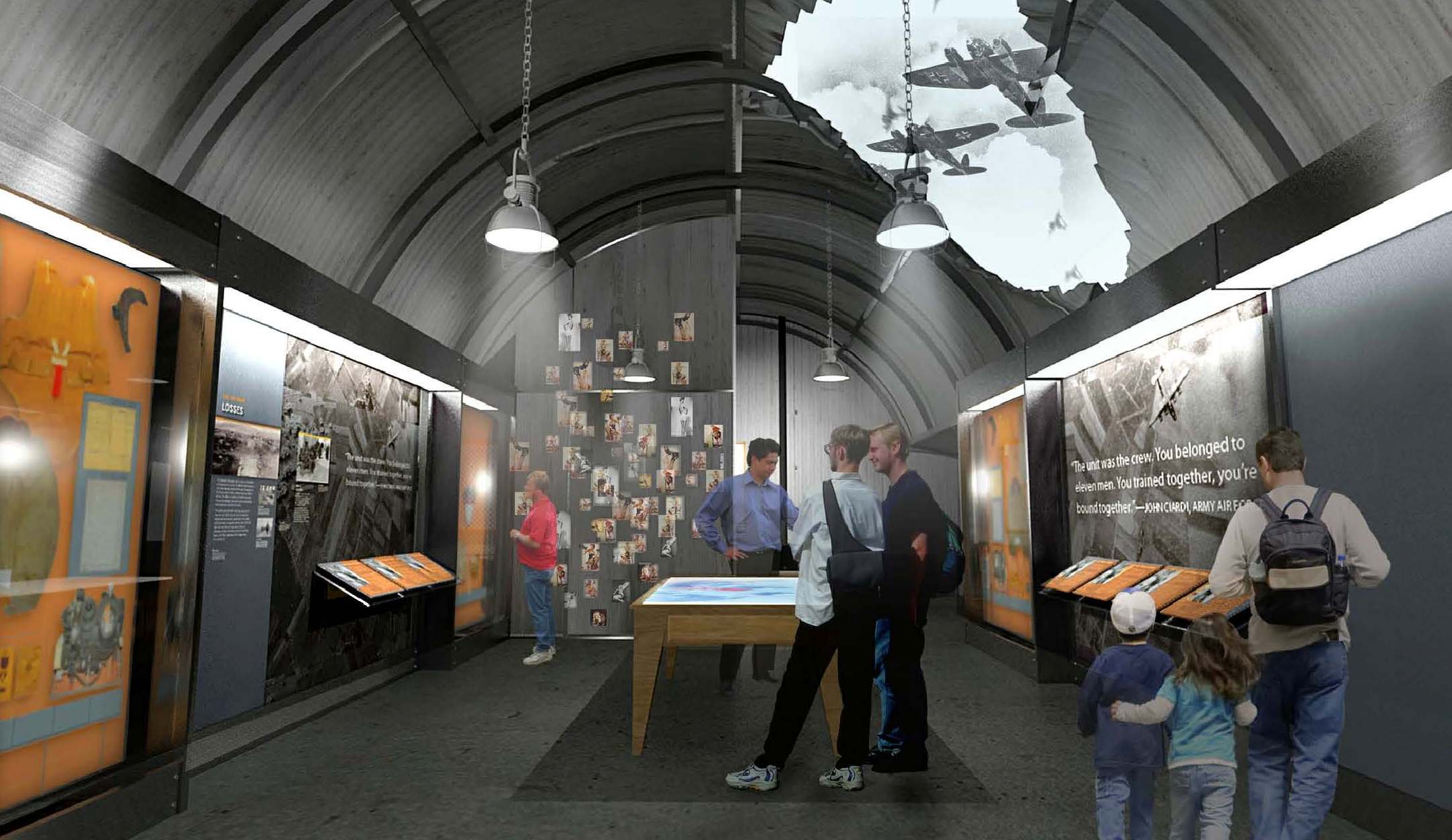
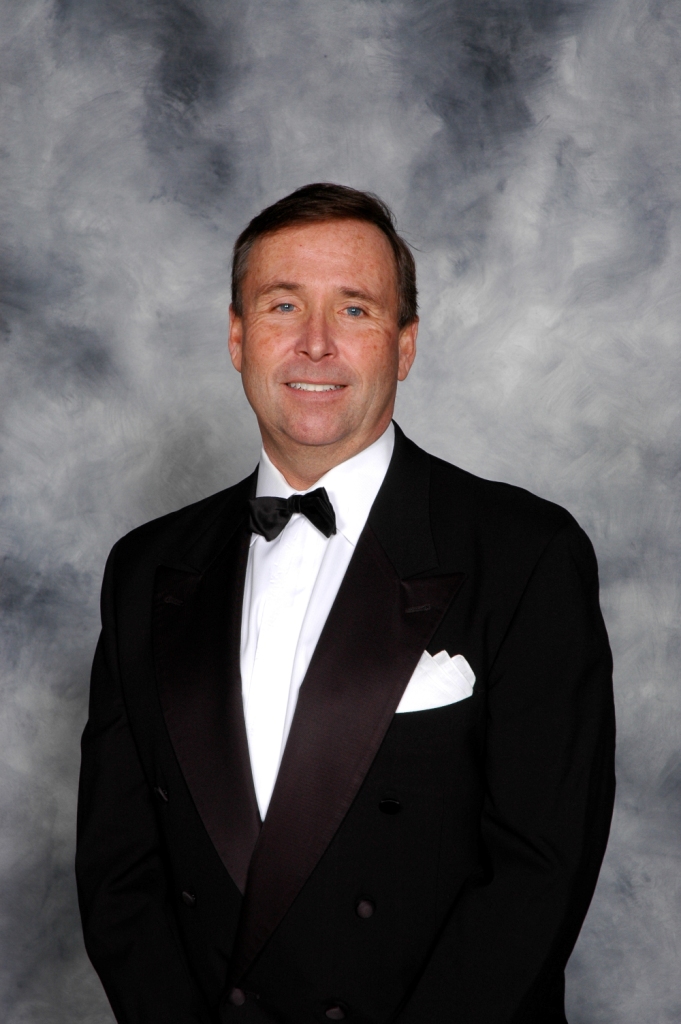
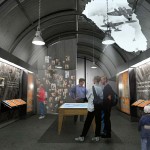

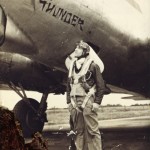
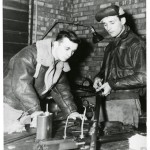
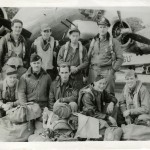


Leave a Reply